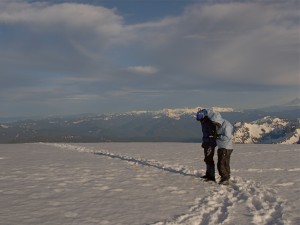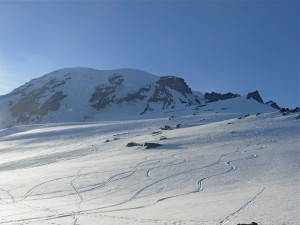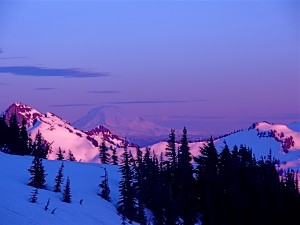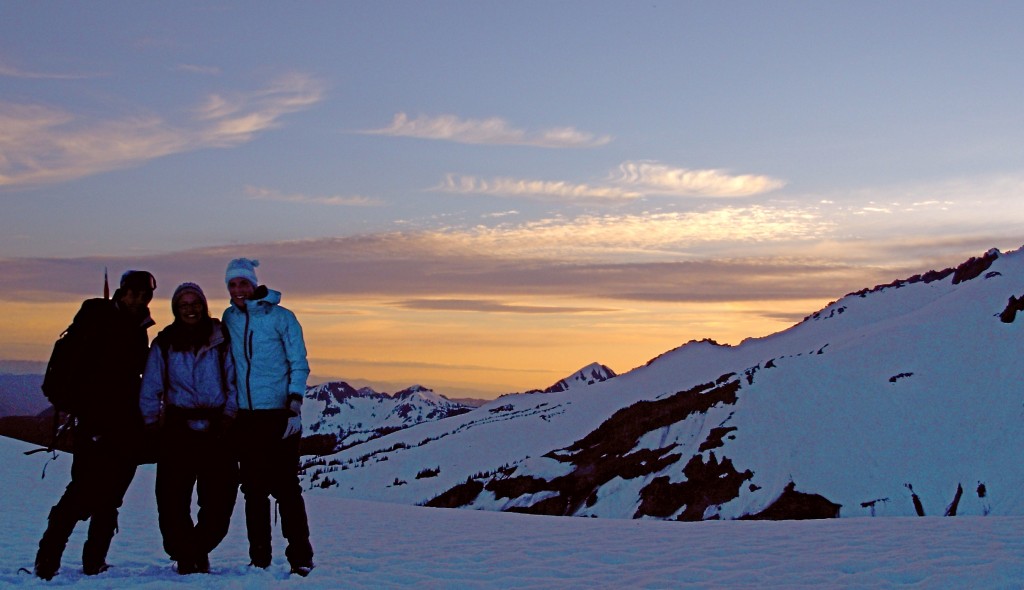I got back from spending a week at home, and our plans had changed again. Apparently research is like that, especially when you’re waiting on mother nature to listen to you. The snow still hasn’t melted enough to open roads in Central Oregon, and I think the ladies at the Deschutes and McKenzie Ranger districts are coming to dread my frequent phone calls asking about road openings. Instead of leaving for a week-long trip to Central Oregon to collect ice worms, we did a day trip to Rainier and a trip up to the UW to visit some professors.
Tim Clute came up to Paradise with Karina, Peter, and me. Our field site is about 2.5 miles from the Paradise Parking lot, and about 2,500 feet of elevation gain. At the field site, we set up transects, and collect specimens (bacteria for Karina and ice worms for me). Karina, Tim and I wanted to see Camp Muir, so we hiked the extra 2mi and 2,000 ft up to the camp to check it out (sadly, I forgot my camera at the field site!! So no pictures…). I was so excited though because from Camp Muir you’re able to see Mt. Adams, Mt. Hood, Mt. St. Helens, AND Mt. Jefferson. CRAZY…

Timmy and Karina monitoring ice worm quadrats
We got back and finished out the rest of the hourly worm quadrat counts. It depends on conditions, but the worms usually surface around 4:30pm, and start going back under the snow when the snow crusts over (around 8-8:30).
There was a beautiful sunset on our hike back down the hill… thanks summer solstice!
The next day at the UW, we started out with a tour of the geochem department, learning about stable isotopes and what exactly happens when we send off samples to be tested. It was really great to simultaneously see the machines and hear an explanation of how the stable isotope values are generated. Peter and Chantal (another of Peter’s advisees) went to the Burke Museum to measure Anna’s Hummingbirds and collect feather samples for her stable isotope analysis, while Karina and I went to see Shelly Carpenter. She taught us how to filter and Dapi stain the bacteria we collect from a snow sample. From the number of bacteria on the filter, Karina can determine the bacterial density on the glaciers.
When we got back, the advisees and the Wimberger fam had dinner and learned about crevasse rescue with Andy Davis. We had a great time rescuing Peter out of a fake crevasse in the backyard… but my favorite was learning how to prusik out of a crevasse (but we used a tree out by the street).



